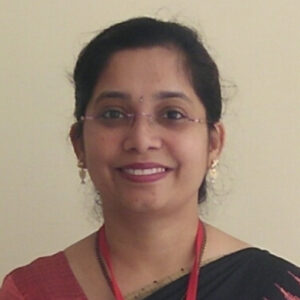Indigenous foods are almost always better for local populations. However, the public distribution system standardises a diet, causing a shift from what the consumers are accustomed to.
Published Aug 04, 2025 | 8:00 AM ⚊ Updated Aug 04, 2025 | 8:00 AM

Even though schools serve hot food under hygienic conditions, questions remain regarding vitamin, micronutrient, and protein deficiencies—and the absorption capabilities of the children. (Representational image)
Synopsis: Malnutrition among tribal children reflects a national issue that remains deeply tied to geography, socio-economics, and policy implementation. Governments must find the reason for malnutrition and address it with a tailored approach as opposed to a one-size-fits-all approach.
Karnataka has the least number of tribal children aged under five suffering from malnutrition, the Lok Sabha was told recently.
The number of malnourished tribal children in Karnataka — 584 — the lowest in the country, however, raised eyebrows.
Responding to a question by Koraput, Odisha MP Saptagiri Sankar Ulaka, the Union Ministry of Health and Family Welfare said on 25 July that Madhya Pradesh, Maharashtra, and Chhattisgarh continued to lead the country in tribal malnutrition figures. It underscored a national crisis that remains deeply tied to geography, socio-economics, and policy implementation.
In South India, a total of 1.46 lakh tribal children below five have been classified as malnourished. These children fell into one or more of three categories: stunted (low height for age), wasted (low weight for height), and underweight (low weight for age).
Telangana recorded the highest number of malnourished tribal children (67,402) in South India, followed by Andhra Pradesh (61,002), Tamil Nadu (13,821), and Kerala (3,117).
The data, sourced from the government’s Poshan Tracker, a digital platform under the Poshan Abhiyan (National Nutrition Mission), highlighted the persistent gaps in nutrition delivery and the growing need for targeted, localised interventions.
While government schemes like the Poshan Abhiyan have been aiming to address malnutrition by tracking and supporting children through Anganwadis and mid-day meal schemes, questions remained on whether the benefits were reaching the needy and whether the aid being provided was nutritionally adequate.

Dr Deepa Bhat.
“While the government is striving to provide nutritious food to the masses, the question is whether it is reaching them,” Dr Deepa Bhat, a Mysuru-based nutrition researcher, said. “My maid sells the government ration because she finds it substandard.”
The anecdote reflected a larger trust deficit and quality concern surrounding the Public Distribution System (PDS) and its standardised offerings. For tribal communities, which often have distinct dietary practices passed down through generations, a one-size-fits-all approach might do more harm than good.
“Indigenous foods are almost always better for local populations. However, the public distribution system standardises a diet, causing a shift from what their bodies are accustomed to,” Dr Bhat explained.
In tribal areas, especially in states like Karnataka and Telangana, traditional diets often included millets, seasonal greens, forest produce, and locally available sources of protein and iron. However, the PDS typically offered wheat and iron-fortified rice, which may not align with the digestive patterns or nutritional requirements of the population it aims to serve.
“About 10 percent of the population has thalassemia or sickle cell disease. For them, iron-fortified rice is detrimental. Uniformity of diet is not the way to go,” Bhat warned.
While most states showed significant numbers of malnourished tribal children, Karnataka’s figure of just 584 has baffled experts.
“I do not believe Karnataka has such few malnourished tribal children. It might be a misrepresentation of data,” Dr Bhat opined, highlighting the possibility of underreporting or flaws in gathering and uploading data onto the Poshan Tracker. She added that many tribal families remained on the fringes of digital access, outside consistent tracking.
“The Poshan Abhiyan is good, but we are only focusing on providing food, not nutrition,” Dr Bhat added. Nutrient absorption, food quality, and cultural compatibility must be at the forefront of any intervention.
Even schools and Anganwadis that serve meals are not free of concerns.
“Even though schools serve hot food under hygienic conditions, questions remain regarding vitamin, micronutrient, and protein deficiencies—and the absorption capabilities of the children,” Dr Bhat said.
She argued that nutrition is as much psychological as physiological, pointing to broader issues such as children’s food preferences, family stress, and dietary habits shaped by peer influence and the prevalence of junk food.
“With the influx of junk food, it is important to understand where they fall behind,” she opined.
Among the five South Indian states, Kerala reported the lowest number of malnourished tribal children (3,117) apart from Karnataka. Unlike Karnataka’s potentially skewed numbers, Kerala’s figure reflected better handling of local dietary needs.
“Kerala addressed these local needs much better,” Dr Bhat said, pointing to community kitchens, local sourcing, and efforts to work with tribal self-help groups that align with indigenous food practices.
With things as they stand, Dr Bhat noted that it is time the governments figured out the reason for malnutrition and addressed it with a tailored approach as opposed to a one-size-fits-all approach.
(Edited by Majnu Babu).
